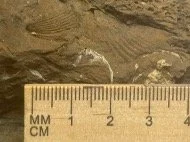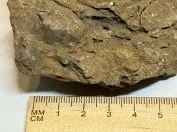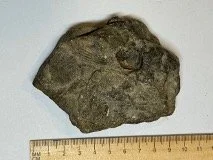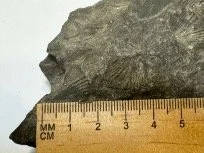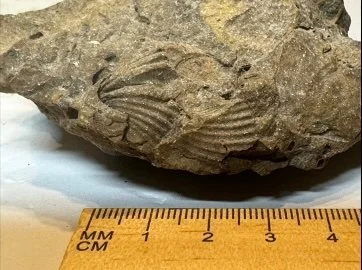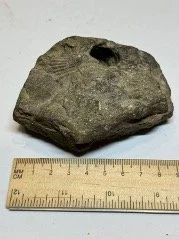Fossils are evidence of past life. Studying them enables us to read about local life of life thousands or even millions of years ago.
Early in 2024, a Bridlemile home owner shared that he found four fossil-bearing rocks in his yard, which is located north of the Hamilton Park tennis courts (NE part of the park).
An analysis was made thanks to NARGPaleo and comments made at their monthly show-and-tell. Also, the volunteer experts at the Rice Museum at their “Mystery Rock” day helped with the analysis.
Analysis:
The rocks with the fossils are likely made of limestone. Also, rock 1 (the big rock) has a micaceous shale base.
All four rocks contain fossil shells that show the remains of marine animals called "brachiopods".
Brachiopods were particularly abundant during Paleozoic time (248 to 545 million years ago). They are often the most common fossils in rocks of that age. Paleozoic brachiopods
Brachiopods are not known to have lived in the Portland area in pre-historic times. Therefore, these fossils are likely not to have originated in or near Bridlemile.
In the Paleozoic era, Idaho and surrounding areas (eastern Washington and Oregon) were covered by a shallow sea and home to brachiopods. Paleozoic brachiopods in Idaho
The top portion of rock 1 (the big rock) also contains small white pieces. Many of these are the remains of shells. Others, each with a circular, button-like shape and white color, are fossilized Crinoid stems. Crinoids are marine invertebrates. Like the brachiopods, crinoids were common during the Paleozoic time. They are not known to have lived in the Portland area. Therefore, they are not likely to have originated in or near Bridlemile.
Notes: small, circular holes in the rock (not shown) are likely where crinoid stems used to be, but have been leached away over time.
One theory is that these fossils came to Portland as the result of "erratics".
This "erratics" theory is that the rocks were swept down the Columbia River from eastern Idaho, etc. as a result of the Missoula floods of 13,000 to 15,000 years ago. These floods originated as a result of ruptures of ice dams, which created rushing waters from giant glacial lakes in eastern Idaho, etcA possible issue with this "erratics" theory is that it does not explain how the fossils remained in as good shape as they did despite being swept all the way from eastern Idaho, etc. to Bridlemile.
An alternative theory is that the rocks were brought to the yard and left there for unknown reasons by an earlier owner of the house.
Rock 1: Big rock. Angled view of the entire rock.
Rock 1: Close-ups of brachiopod shell fossils
Rock 2: Close-up. Top-down view of the left side.
Rock 1: Left: Shell fragments and crinoid stems and arms. Middle: Crinoid stem and arm. Right: Crinoid stem.
Fossils
Rock 2. Close up of the right side.
Rock 3: Concave bottom rock. The entire rock.
Rock 3: Close up of the top view fossils.
Rock 3: Close up of the bottom (concave) view fossils.
Rock 4: Rock with hole. Entire rock in angled and top-down views
Rock 4: Close up view.
Rock 2: Flat-bottom rock. The entire rock. Fossils are on the top side.



